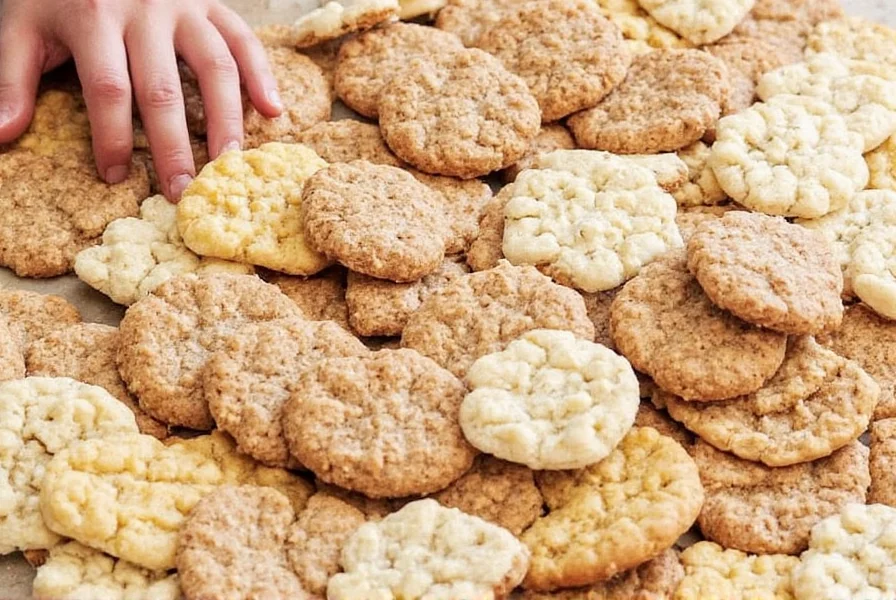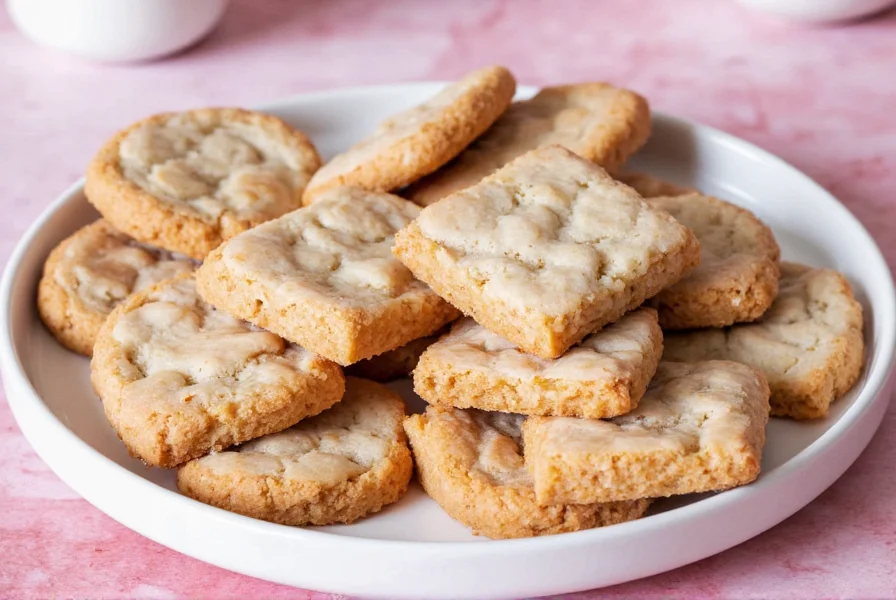When searching for \"ginger snaps 2000,\" you're likely looking for that specific iteration of the classic ginger snap cookie recipe that circulated widely during the early internet era. Unlike modern variations that sometimes compromise on spice intensity or texture, the 2000-era recipe maintained traditional baking methods that produce cookies with that signature crisp \"snap\" when broken.
The Historical Context of Ginger Snap Cookies
Ginger snap cookies have roots tracing back to medieval Europe, where ginger was a prized spice brought along trade routes. The American version evolved from German \"pepperneuten\" cookies, with the distinctive \"snap\" texture emerging as bakers perfected the balance of ingredients. By the early 2000s, this recipe had become standardized across popular cooking websites and food publications, creating what many consider the definitive version of this classic cookie.

Authentic Early 2000s Ginger Snap Recipe
The recipe that defined ginger snaps in the year 2000 maintained several key characteristics that distinguished it from both earlier and modern variations. This version emphasized:
- Precise molasses-to-sugar ratio for optimal flavor and texture
- Specific baking temperature (350°F/175°C) for consistent results
- Chilling time requirements that prevented excessive spreading
- Traditional spice blend proportions that balanced heat and warmth
| Ingredient | Traditional 2000 Recipe Amount | Purpose in Recipe |
|---|---|---|
| All-purpose flour | 2 1/4 cups | Provides structure without excessive gluten development |
| Unsulfured molasses | 3/4 cup | Creates deep flavor and characteristic dark color |
| Freshly grated ginger | 1 tablespoon | Provides bright, spicy notes that dried ginger can't match |
| Ground ginger | 2 teaspoons | Contributes warm base notes of ginger flavor |
| Cinnamon | 1 1/2 teaspoons | Complements ginger with warm, sweet notes |
Why the 2000s Recipe Stands Out
The ginger snap recipe that circulated in the early 2000s represented a sweet spot in cookie evolution. Before this period, many recipes relied solely on ground ginger, missing the bright, spicy notes of fresh ginger. After this period, some recipes began substituting honey for molasses or reducing spice levels to appeal to milder palates.
What made the 2000s version special was its commitment to authentic texture and flavor balance. Bakers discovered that chilling the dough for exactly 24 hours before baking allowed the flour to fully hydrate and the spices to meld, creating cookies with:
- A clean \"snap\" when broken (not too hard, not too soft)
- Complex spice notes that evolved from the first bite to the finish
- Perfect crumb structure that held together without being dense
- A distinctive cracked surface that signaled proper baking
Mastering the Technique: Key Steps for Authentic Results
Following the traditional ginger snaps 2000 method requires attention to specific techniques that many modern recipes have simplified or abandoned:
- Dough chilling protocol - Unlike contemporary recipes that suggest 1-2 hours, the 2000 standard required 24 hours for optimal flavor development and texture
- Precise portioning - Using a #40 cookie scoop (1.5 tablespoons) ensured uniform baking and the ideal thickness for that signature snap
- Baking surface selection - Light-colored aluminum baking sheets produced more consistent results than dark pans or silicone mats
- Cooling technique - Transferring cookies to wire racks after exactly 2 minutes prevented over-baking while allowing proper setting

Common Mistakes That Ruin Traditional Ginger Snaps
When attempting the classic ginger snaps 2000 recipe, several pitfalls can compromise the authentic results:
- Using sulfured molasses instead of unsulfured (creates an off-flavor)
- Substituting ground ginger for fresh ginger (loses bright, spicy notes)
- Insufficient chilling time (causes cookies to spread too thin)
- Baking at incorrect temperature (350°F is critical for proper rise and set)
- Overbaking to achieve crispness (creates hard, brittle cookies instead of the ideal snap)
Variations That Honor the Original Recipe
While purists prefer the traditional ginger snaps 2000 preparation, several thoughtful variations maintain the essential character while offering new dimensions:
- Lemon-zest enhancement - Adding 1 teaspoon of finely grated lemon zest brightens the spice profile without overpowering
- Crystallized ginger pieces - Incorporating 1/4 cup of finely chopped crystallized ginger adds delightful texture pockets
- Spice adjustments for intensity - Increasing ground ginger to 2 1/2 teaspoons creates a more assertive cookie for spice lovers
- Glaze variations - A light lemon glaze complements rather than overwhelms the traditional flavor
Proper Storage for Long-Lasting Freshness
One reason the ginger snaps 2000 recipe gained such popularity was its exceptional shelf stability. When stored properly, these cookies maintain their signature texture for weeks:
- Store in airtight containers with parchment between layers
- Include a slice of bread to maintain slight chewiness (replace every 2 days)
- Freeze baked cookies for up to 3 months with minimal quality loss
- Freeze portioned dough balls for quick baking as needed
The magic of properly stored traditional ginger snaps is that they often improve after 2-3 days as flavors continue to meld, making them ideal for holiday baking well in advance.
Frequently Asked Questions
What makes the ginger snaps 2000 recipe different from modern versions?
The ginger snaps 2000 recipe maintains a precise balance of fresh and ground ginger, requires 24 hours of chilling time for optimal flavor development, and uses specific baking temperatures that create the perfect snap texture. Modern versions often reduce spice levels, shorten chilling times, or substitute ingredients that compromise the authentic texture and complex flavor profile that defined the early 2000s standard.
Can I make authentic ginger snaps without fresh ginger?
While you can substitute additional ground ginger, the authentic ginger snaps 2000 experience requires fresh ginger for its bright, spicy notes that ground ginger alone cannot provide. If fresh ginger is unavailable, use 1/2 teaspoon of ginger extract along with the ground ginger to approximate the complex flavor profile, though the result won't be identical to the traditional recipe.
Why does the traditional recipe require 24 hours of chilling?
The 24-hour chilling period in the ginger snaps 2000 recipe allows the flour to fully hydrate, the spices to meld and develop complex flavors, and the fats to solidify properly. This extended rest creates cookies that spread minimally during baking, develop the signature cracked surface, and achieve the perfect balance of crisp exterior with slightly chewy interior that defines authentic ginger snaps.
How can I tell when traditional ginger snaps are perfectly baked?
Authentic ginger snaps 2000 are perfectly baked when the edges are set and slightly darkened while the centers still appear soft and underdone. They should have developed the characteristic cracked surface pattern. When removed from the oven, they'll continue to cook on the baking sheet for about 2 minutes before transferring to a cooling rack. The ideal texture is a clean \"snap\" when broken - not too hard, not too soft.
Do traditional ginger snaps improve with age like some cookies?
Yes, properly made ginger snaps 2000 often improve after 2-3 days of storage as the spices continue to meld and flavors deepen. Unlike many cookies that stale quickly, the high molasses content and specific sugar balance in this traditional recipe allows them to maintain their signature snap texture while developing more complex flavor notes over time, making them ideal for holiday baking well in advance of serving.











 浙公网安备
33010002000092号
浙公网安备
33010002000092号 浙B2-20120091-4
浙B2-20120091-4